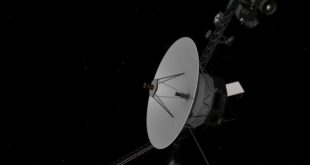by Wayne Deng
Currently, humans are looking past earth and out into space, with all its vast possibilities. An issue faced by many space missions is the amount of space available to store essential supplies. Since most missions take astronomical amounts of time and money, it often isn’t possible to bring everything they need with the limited space on the spacecraft. Scientists are now looking into the reprogramming of bacteria to produce specific materials needed to 3D print supplies as a potential storage solution. This would provide astronauts a wide variety of essential supplies such as medicine, hardware, and even food.
To reprogram the bacteria, scientists would directly target the DNA in the cells and edit it to serve a specific purpose. This has already been achieved, but for other purposes, and each programming takes time and resources to determine how and what to change. The reprogrammed set of genetic instructions would then be carried out by the cell and would produce the materials needed for the 3D printing of supplies. Organisms that can convert sunlight, nitrogen, and other organic compounds into usable materials would be used for this process. In order to carry out this complex process, scientists would utilize microfluidic devices. These devices automatically direct the passage of liquids through microchannels to run hundreds of reactions in seconds. The desired genetic instructions would be programmed into the software controlling these devices, enabling them to synthesize the DNA needed for the bacteria to perform certain tasks.
As space agencies approach a major space goal like a manned trip to Mars, innovations like these could help astronauts perform more on their trip and lower the risk of running out of supplies. However, this technique could also be applied to solve problems people are already facing on earth.
 Tempus Magazine By Students, For Students
Tempus Magazine By Students, For Students 



